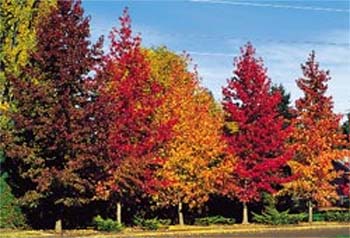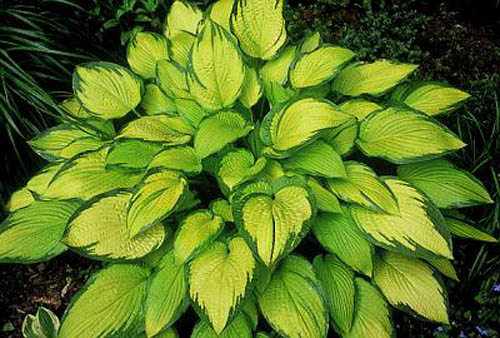Ornamental grasses can become an important addition to your garden. Grasses can add lasting beauty, an air of elegance and character to a yard. In the traditional landscape garden they can be interplanted with flowering perennials, particularly coneflowers and asters. Besides adding beauty to outdoor surroundings, plumes from ornamental grass can be dried for use in flower arrangements.
They also can be used in the wildflower gardens or meadows, where they have the added benefit of attracting birds. We have found ornamental grasses not only provide shelter but food for the birds. In the Fall large flocks of migrating songbirds often descend on our grasses to feed.
Other uses of ornamental grasses are:
1. In containers
2. As background planting
3. Specimen planting
4. Use as a living screen
5. For groundcover
Most of the grasses thrive in full direct sun, although a few tolerate shade. They mainly like a well-drained soil rich in organic matter. Therefore, we always work organic matter into the soil before planting. Remember too that grasses are deep rooted so really dig deep. Their root system makes moving or dividing extremely difficult.
Grasses are very hardy, pest resistant plants that require no fertilization and very little watering. We do water them during their first growing season but it is more out of habit than a cultural requirement. Since grasses grow so densely, we have never had to worry about weeds.
In early spring before new growth begins, remove the previous year’s foliage. Grasses will begin growing earlier if foliage is removed. We have found power hedgetrimmers work very well for this. In the Spring, if the center of the clump shows little or no growth, the plant should be divided if possible. Separate and replant the vigorous growth on the outer edge of the clump.
Some popular grasses for the home garden are:
Acorus
Andropogon
Arrhenatherum
Calmagrostis
Carex
Festuca
Helictotrichon
Miscanthus
Panicum
Pennisetum
Schizacharium
Sorghastrum
Varieties we recommend are:
Andropogon glomeratus ‘Bushy Blue Stem’
This wonderful native with flattened blue-green foliage makes a very structural statement, reaching 6 feet tall, with only a 2-3 foot spread. In early fall the plumes emerge and with the first heavy frost, the plumes take on a billowing cloud-like appearance.
Sporobolus airoides ‘Alkali Dropseed’
Alkali dropseed qualifies as one of the least-known of the native grasses. Tolerant of drought and alkaline soils, a single plant will quickly produce a 3 feet tall by 6 feet wide clump of grey-green foliage. In Mid-Summer it is topped with graceful tall golden bronze panicles.
Panicum virgatum ‘Cloud Nine’
We are very fond of Panicums for two reasons, they are native grasses and they are quite beautiful. Cloud Nine tops out at 6-7 feet tall with airy panicles of gold against subtle blue foliage. We tucked this new native selection in the back of the sunny border to offer a vertical grassy form with airy fall panicles.
Panicum virgatum ‘Shenandoah’
This selection of our native panicum makes a small 3 foot tall clump. The foliage is dark purple on its tips throughout the summer, but when fall hits, nice airy plumes appear.
Chasmanthium latifolium ‘Northern Sea Oats’
This is one of the few ornamental grasses that thrives in shady conditions. Northern Sea Oats has a short basal tuft of wide grassy leaves that produces 4 foot stalks with dramatic grain-like flowers. Northern Sea Oats grow best in a naturalistic garden, either in the border or by the water.
Calamagrostis arundinacea ‘Karl Forester’
This grass is appreciated not only for its glossy, dark green leaves but also for its graceful flower spikes which appear reddish-green in early summer and change through the growing season to a creamy white. Highly prized for its ability to add subtle texture and color in the perennial border.
Panicum virgatum ‘Prairie Sky’
This native switchgrass is prized for its powdery blue foliage. In late summer, billowing plumes of amber brown top the clump.
Miscanthus sinensis ‘Morning Light’
Morning Light has very narrow foliage with a subtle white stripe that causes this plant to shimmer and glow in the landscape. This choice ornamental grass of 4-5′ sets off any sunny area in the garden. If you need a plant to stop your eye, this grass will do it. Highlights all other plants in its company.
Pennisetum orientale ‘Tall Tails’
This vigorous, heat-loving plant makes a border-sized upright arching clump to 4.5 feet tall. The early fall plumes of tan, with a hint of pink, tower another above the foliage.
Panicum virgatum ‘Northwind’
The wide, olive-green foliage makes the strongest vertical accent of any of the switchgrasses. This vigorous grower is topped in September with attractive narrow plumes.
Miscanthus giganteus ‘Giant Chinese Silver Grass’
This plant quickly grows to 12 feet by early summer. In early fall, plumes rise and add to the drama of this grass. The grassy leaves are long and gracefully sway with the slightest breeze.
Miscanthus sinensis ‘Variegatus’
Perennial grass with white stripes on dark green leaves. Feathery flower plumes are an added feature. Excellent as a specimen or in the perennial border.
Miscanthus sinensis ‘Yaku Jima’
Excellent ornamental discovered on the Japanese island of Yaku Jima. Compact, clumping grass with finely textured silver-striped green foliage. Silver plums appear in late summer and remain attractive into winter.
Grasses are fun to play with in the garden. They add vertical texture like no other plant. Ornamental grasses really come into their own in the Fall and Winter with their beautiful plumage, all the while providing food and shelter for birds and other wildlife. In the Spring the dead foliage even provides nesting material. There are so many easy to grow varieties you really cannot go wrong.



